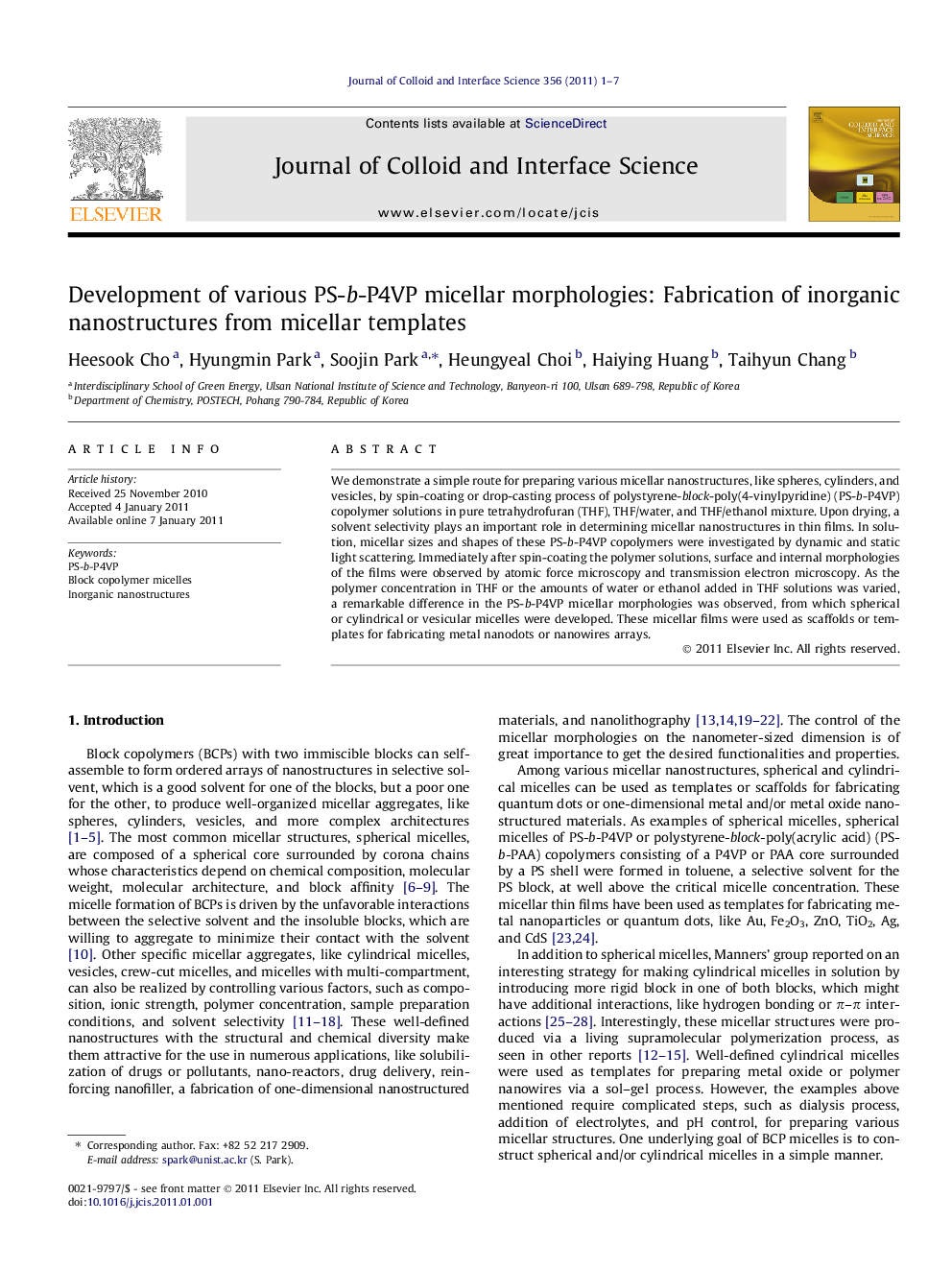| Article ID | Journal | Published Year | Pages | File Type |
|---|---|---|---|---|
| 608694 | Journal of Colloid and Interface Science | 2011 | 7 Pages |
We demonstrate a simple route for preparing various micellar nanostructures, like spheres, cylinders, and vesicles, by spin-coating or drop-casting process of polystyrene-block-poly(4-vinylpyridine) (PS-b-P4VP) copolymer solutions in pure tetrahydrofuran (THF), THF/water, and THF/ethanol mixture. Upon drying, a solvent selectivity plays an important role in determining micellar nanostructures in thin films. In solution, micellar sizes and shapes of these PS-b-P4VP copolymers were investigated by dynamic and static light scattering. Immediately after spin-coating the polymer solutions, surface and internal morphologies of the films were observed by atomic force microscopy and transmission electron microscopy. As the polymer concentration in THF or the amounts of water or ethanol added in THF solutions was varied, a remarkable difference in the PS-b-P4VP micellar morphologies was observed, from which spherical or cylindrical or vesicular micelles were developed. These micellar films were used as scaffolds or templates for fabricating metal nanodots or nanowires arrays.
Graphical abstractWe describe the fabrication of various PS-b-P4VP micellar nanostructures, like spheres, cylinders, vesicles, and reverse spheres, by controlling solvent selectivity in polymer solutions. From micellar templates, metal nanodots or nanowires can be prepared..Figure optionsDownload full-size imageDownload high-quality image (44 K)Download as PowerPoint slideResearch highlights► Various micellar structures were prepared from block copolymer solution by a simple casting. ► Solvent quality for block copolymer plays a key role in determining the micellar morphologies. ► Micellar thin films can be used as templates for fabricating arrays of inorganic nano-objects.
